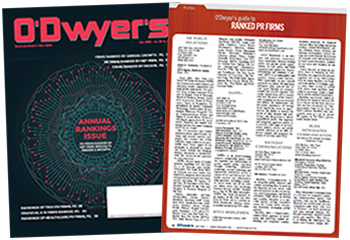 Ken MacFadyen |
James Joyce’s Ulysses, by most accounts, rests atop the literary canon. Often overlooked, when it was first published, the reviews were mixed. One critic, a Harvard professor, diagnosed Joyce as being “in an advanced stage of psychic disintegration,” while the author’s contemporary, Virginia Woolf, called the book “a misfire” and “a bore,” surmising it came across as diffuse, brackish and pretentious.
The point isn’t that either side is right or wrong. But the disparate opinions—for a novel considered the greatest work of fiction ever written—should underscore that when it comes to any finished creative work, a definitive consensus is more of an abstract idea than a realistic outcome.
Given that most content-marketing efforts, at their heart, are collaborative endeavors, it speaks to why strategy and process are so important to align objectives and define responsibilities. Moreover, understanding the subjectivity involved will help contributors embrace the Pareto Principle, which is a prerequisite to establish an efficient and productive content-marketing program.
|
|
“Striving to better, oft we mar what’s well.”
Ray Dalio, founder of hedge fund Bridgewater Associates, is active on social media. Each day he posts a different “life principle” that reflects his philosophy around leadership and investing. In one April post, he implored his followers to “be an imperfectionist,” explaining too much time is spent “on little differences at the margins at the expense of the important things.”
It’s not exactly a controversial take. Similar sentiments have been expressed throughout time, going back to Confucius, Shakespeare and Voltaire. Yet dissenters will hold that embracing imperfection equates to “a lack of effort,” which is how multiple commenters responded to Dalio’s post.
This may be true in certain roles with no margin for error. You wouldn’t want your brain surgeon mumbling under her breath that “perfection is the enemy of progress.” The goal of content marketing, however, is to drive awareness and influence consumer behaviors. And if counsel can’t agree on an Oxford comma or whether sentences should ever begin with a conjunction, those micro quibbles—when multiplied—prevent content from ever seeing the light of day.
The Pareto Principle, while not precise, contends that roughly 80 percent of your results stem from 20 percent of your efforts. Applied to content, this idea can help organizations determine where, exactly, efforts are being wasted. Armed with this perspective, they can devise a process that focuses exclusively on the 20 percent that matters.
It’s not about striving for anything less than perfection; it’s about recognizing at which point refinement turns into paralysis and at what expense to the objectives of a given marketing initiative.
“A horse, designed by committee.”
Jeff Bezos famously instituted a “two pizza” rule at Amazon. The mandate effectively limits the participation on a project to the number of people who can be fed by two large pies. The thinking, as conveyed in Brad Stone’s book The Everything Store, is that by keeping projects small and agile, a concentrated team is more productive without having to coordinate across multiple groups.
Stone described it as an offshoot of Frederick Brooks’ observation that adding manpower to complex tech initiatives slows rather than accelerates progress. An added benefit is that smaller teams also obviate groupthink, while empowering independent, innovative ideas, a process Bezos referred to as “wandering” in his most recent shareholder letter.
This is an important concept in content creation. When analyzed through the Pareto Principle lens, much of the wasted effort can be minimized through being more discriminating in determining who participates and at what stage of the process.
David Hume, in his essay “On the Standards of Taste,” spent more than 7,500 words discussing the qualifications that should be mandatory for critics and editors. Yet, absent a process, everyone from interns to third-party consultants are invited to scrutinize what would otherwise be a finished product. Process wise, this equates to a game of 52-card pickup.
The most seamless and simple process is when a content champion emerges who relishes the writing role and has a nose for what’s topical and interesting. The issue, however, is that writing often takes a backseat to other priorities that comprise executives’ day to day. Most organizations, in turn, will either create an in-house editorial function or tap third parties to oversee a more holistic content strategy.
Our agency views the content-creation process as a series of concentric circles. The ideation phase aims to be inclusive, and initially solicits ideas and commentary from wider, cross-functional teams. We specialize in financial services, so brainstorming calls may include portfolio managers, analysts, business-development or marketing executives, or even third parties such as academic researchers. Upon digesting the discussion, we’ll come back to the wider group with a series of proposed themes or story angles.
Once a topic is determined, we then work directly with the proposed “author,” whose name will be on the article. Through a short interview, we’ll gain a better understanding around the points that matter most to the targeted audience, as well as any relevant examples or anecdotes. Our objective is to minimize the effort required from clients so they can dedicate more time to creating a consistent stream of content, which is when the effort, ultimately, pays dividends.
Some writers short change the value of an outline. When collaborating, though, this is the most important step to foster alignment and set expectations. It also represents a point in the process when it’s still feasible to change course, providing a check point for would-be dissenters to either voice concerns or sign off on the direction of the piece. With a quorum in place, and with a greenlight on the proposed narrative, the editorial team proceeds to draft the article, working directly with the author to iterate and refine it. Usually, a finished product is ready after one or two rounds of edits. Once it goes through compliance, it’s then ready for distribution. At this point it can be incorporated into marketing materials, reinforce social media campaigns, be pitched out to trade publications as a byline, or support any number of internal or external communication strategies.
The process works when the challenges in forming a consensus are resolved in the outline stage, allowing a smaller team to then concentrate on one executive’s perceived view of “perfection.” In keeping with the Pareto Principle, the process breaks the endless iteration loop, marked by detached contributors whose “two cents” can translate into a dollar’s worth of interference in which the entire process is reopened and recycled with every passing suggestion. Again, this is not the fault of contributors, who should offer feedback when solicited. The culprit, every time, can be traced back to the process and precisely when contributors should be asked to contribute. This is generally where content marketing programs either die or thrive to augment and enhance an integrated PR strategy.
***
Ken MacFadyen is Head of Content at BackBay Communications.



 A look at today's magazines, newspapers and the graphics on television and consumer products raises the question of whether or not designers know their intended audience.
A look at today's magazines, newspapers and the graphics on television and consumer products raises the question of whether or not designers know their intended audience. PR and marketing departments are in the hot seat, as forecasts show that growth in advertising spend stalled in 2023 in the wake of cost-of-living increases and continued economic uncertainty.
PR and marketing departments are in the hot seat, as forecasts show that growth in advertising spend stalled in 2023 in the wake of cost-of-living increases and continued economic uncertainty. WPP has forged what it calls a “first-of-a-kind global agency partnership” with China’s TikTok, a short-form mobile video platform.
WPP has forged what it calls a “first-of-a-kind global agency partnership” with China’s TikTok, a short-form mobile video platform. Widespread disinformation may derail Biden/Harris agenda, according to a coalition of advocacy groups, who see the need for government-wide strategy to repair broken information ecosystem. (1 reader comment)
Widespread disinformation may derail Biden/Harris agenda, according to a coalition of advocacy groups, who see the need for government-wide strategy to repair broken information ecosystem. (1 reader comment) There's a media appetite for positive stories right now, anything to counterbalance the steady stream of bad news from the deadly spread of COVID-19. (1 reader comment)
There's a media appetite for positive stories right now, anything to counterbalance the steady stream of bad news from the deadly spread of COVID-19. (1 reader comment)


 Have a comment? Send it to
Have a comment? Send it to 
No comments have been submitted for this story yet.